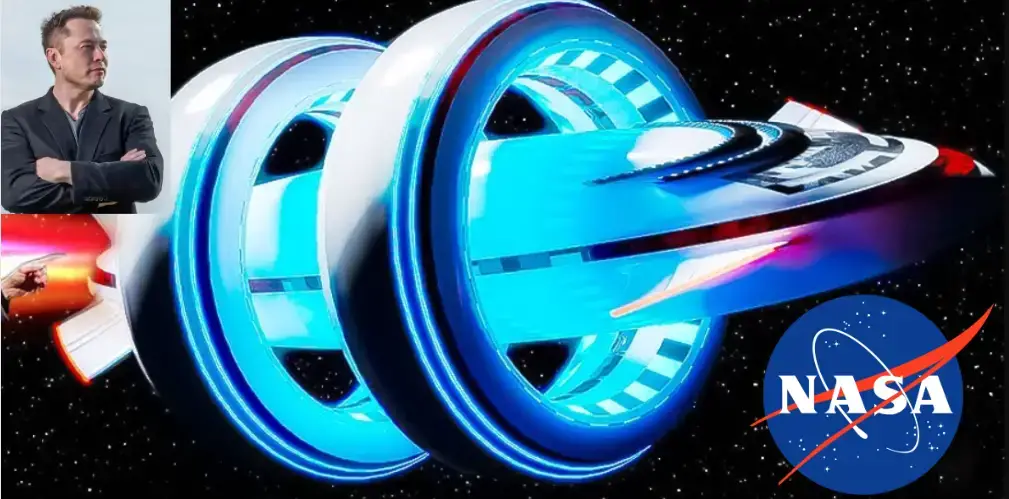
In my current story, Leaving Home, I am about to launch my characters into the galaxy and get them to their prepared planet, which they have named Rhea. It has to be FTL (faster than light) travel because anything outside of the Earth is jaunt. Outside of our Solar System is really a jaunt. The closest star (besides our Sun) is Proxima Centauri, 4.25 light years away, or about 25 trillion miles (40 million km). Our fastest-ever spacecraft, the now-in-space Parker Solar Probe, will reach a top speed of 450,000 mph and take about 6,633 years to reach Proxima Centauri and its solar system.1 It’s not really practical for a colony. There could be a generation ship, but the changes from all that time, especially for a story, are not what I’m interested in. Therefore, I needed to understand what is known and what could be for this writing endeavor.
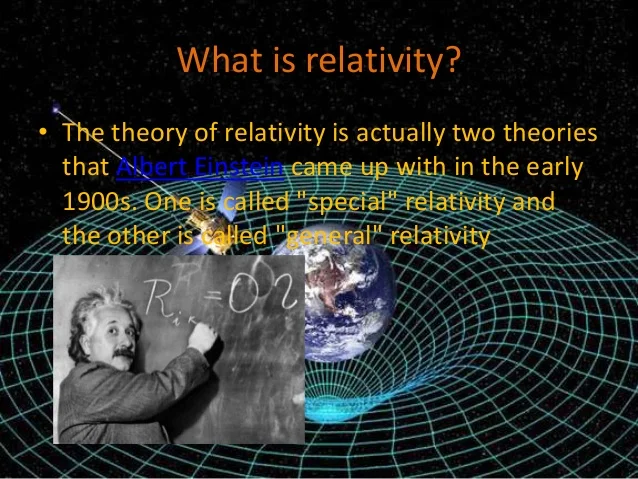
The special theory of relativity infers that only particles with no mass (at rest) may travel at the speed of light and that nothing will travel faster. A caveat to this is nothing travels faster than the speed of light that has mass or sends a signal (carries information). A catch as it were, something can do it but not something we could use and somewhat contradictory. Humans have hypothesized that other particles travel more than the speed of light. This type of travel implies time travel and are called tachyons, but have never been observed.
Several phenomena seem to exceed the speed of light: daily sky motion, light spots, and shadow, proper speeds (where the traveler’s clock records less time than one on Earth), closing speeds (two objects in motion in a single frame of reference get closer together, which is called the mutual or closing speed), and cosmic expansion. All five examples can be explained as optical illusions and proven with special relativity.
Phase velocities and group velocities above c (the speed of light) show particles exceeding the speed of light but not the propagation of signals.
There are more examples of things that appear to travel faster than c, but, as before, they turn out to be optical illusions or things that don’t carry information.
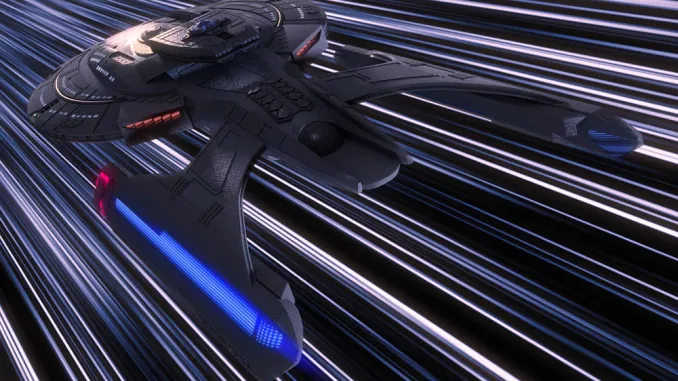
However, it must have FTL travel to tell a story about intergalactic or inter-universe travel. Star Trek is famous for its warp speed, starting at Warp 1, which is the speed of light, and on to as much as Warp 10.
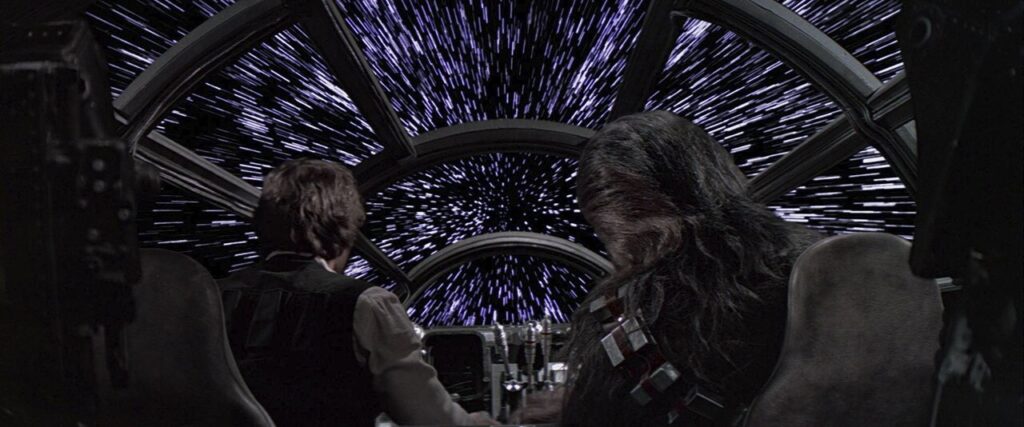
Star Wars had Hyperdrives to jump into Hyperspace.
Dune had space-folding where they actually took the space between two points and brought them together by folding space. In many ways, it is a gimmick to get us into the story of jumping around in space. Still, it is also a fervent human wish that we could someday make that journey.
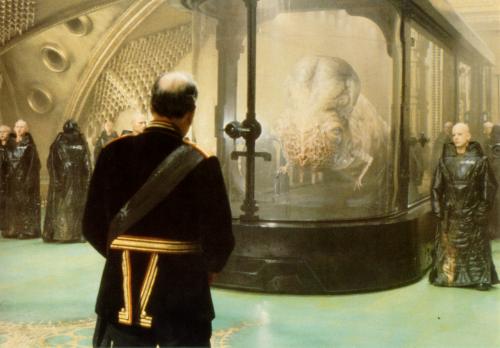
Concepts of how we can get around special relativity have been proposed. “Miguel Alcubierre, a Mexican theoretical physicist, showed that compressing spacetime in front of a spaceship while expanding it behind was mathematically possible within the laws of General Relativity.”1 Alcubierre’s warp drive would work by creating a bubble of flat spacetime around the spaceship and curving spacetime around that bubble to reduce distances. The warp drive would require either negative mass or a ring of negative energy density- which are theoretical. To work. Alcubierre’s warp drive would use this negative energy to create the spacetime bubble.
Other proposals like Krasnikov tubes, traversable wormholes, and quantum tunneling end up with the same issue; they still violate current understandings or require something we have never found (like exotic matter). Dark matter and dark energy were invented to explain specific problems with applying the laws of physics to the universe. There is more going on to account for movements and forces out there in space and dark matter and energy was thrown in to explain it.
That idea has been around for a while, but there is no evidence of it except that without something, the laws of physics don’t work in our observation of the cosmos. “However, in a recent review my colleagues and I suggest that observations across a vast range of scales are much better explained in an alternative theory of gravity proposed by Israeli physicist Mordehai Milgrom in 1982 called Milgromian dynamics or Mond—requiring no invisible matter.” Indranil Banik5
This has been very frustrating, but some information fits on the positive side of this. If aliens have visited our planet, then FTL travel most likely exists. Can you imagine going on a trip in a tiny flying saucer if that trip took thousands of years, at minimum, to get to Earth? Whatever they had in mind didn’t seem worth it unless many of them came to settle into a new colony, and even then, it would be a long shot. The ships would have to be larger than the familiar flying saucer, and those haven’t been seen.
Our technology could start detecting many things going on in our galaxy. For instance, a collapsing warp drive would generate a distinct burst of gravitational waves, a ripple in spacetime that could be detectable by gravitational wave detectors that typically target black holes and neutron star mergers. We don’t have detectors for this type of burst, but the technology to build them exists.
Some new research is the result of a collaboration between a specialist in gravitational physics at the Queen Mary University of London, the University of Potsdam, the Max Planck Institue (MPI) for Gravitational Physics in Potsdam, and Cardiff University. Dr. Katy Clugh of the Queen Mary University of London, the first author of the study, explains, “Even though warp drives are purely theoretical, they have a well-defined description in Einstein’s theory of General Relativity, and so numerical simulations allow us to explore the impact they might have on spacetime in the form of gravitational waves.”3 What is so remarkable about that is humans could search the galaxy for these bursts and find out if there is FTL travel going on. That could prove there is life out there doing that traveling and that they found a way to travel faster than light.
In Leaving Home, I chose Traversable Wormholes because I lucked out in a Meetup that I attend here in Tucson. Many come and go, something you know if you have ever joined a Meetup, but once, we had a physicist writing his dissertation and needed some inspiration. He didn’t like my idea of the type of FTL travel in a story I was writing (not Leaving Home; it was a ghost story). He tried his best to straighten me out by adding details that physicists thought could work.
“But all this talk about wormholes is predicated in general relativity. And while that theory of gravity has survived every observational and experimental test thrown at it over the last century, we know that general relativity isn’t the last word on gravity. Relativity is incapable of describing the centers of black holes, the earliest moments of the universe, and the link between itself and quantum physics.
So maybe a new, improved theory of gravity would allow wormholes to exist.”4
I am sure theories are still being corrected with new evidence, but having a physicist at our disposal added some authenticity to my writing, which was exciting.
The good news I have found on that note is that two recent papers, Alexey Bobrick, Gianni Martire, and Erik Lentz1, provide a solution to the negative particle conundrum in warp drives. However, Bobrick and Martire’s paper did not produce a warp drive that could go faster than light. Still, Lenz’s paper did propose a solution that does not require negative energy and travels faster than c. He used a different geometric approach to solve the equation of General Relativity. By doing so, he found that a warp drive wouldn’t need to use negative energy. Lentz’s solution would allow the bubble to travel faster than the speed of light.
Technology progresses exponentially, so I am excited that some progress is happening. We may find answers that will multiply at increasing speed (ha, ha). Now, if we can only find out how to screen out cosmic radiation, we will be ready to go!
©JM Strasser October 2024 All Rights Reserved
Sources
1. https://theconversation.com/warp-drives-physicists-give-chances-of-faster-than-light-space-travel-a-boost-157391
2. https://en.wikipedia.org/wiki/Faster-than-light
3. https://scitechdaily.com/faster-than-light-travel-new-simulations-explore-warp-drive-gravitational-effects/
4. https://www.livescience.com/traversable-wormholes-modified-gravity.html
5. https://phys.org/news/2022-07-dark-ditch-favor-theory-gravity.html
Images
4. https://lumiere-a.akamaihd.net/v1/images/image_e847417e.jpeg